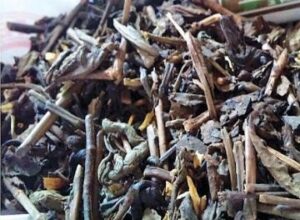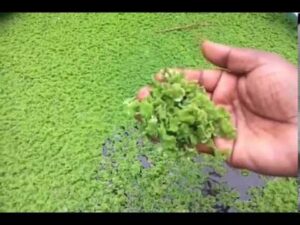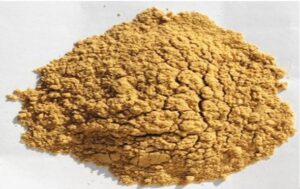Feed formulation and setting up of pig feed production units
In swine production, feed alone represent 70-75% of total cost of production. In intensive pig production, pig directly compete with human being for feeding, since conventional fattening is based on the feeding of cereals like maize, wheat, oats, barley etc. along with other protein, mineral and vitamin supplements.
Complete Pig Feed Milling Process (Feed Pellets)
Actually, the feed production process is based on the pig feed plant design. A complete pig feed mill plant might feed crushing machine, feed mixing machine, feed pellet machine, feed pellets cooler and other kinds of auxiliary equipment
Within the process there are four main steps:
- Raw Feed Stock Moisture Control
In this step, the aim is ensuring that the moisture of the raw materials used for making pig feed isn’t higher than 10-12%. Humid raw materials will hurt the quality of the finished product. There are two ways to dry out the moisture from materials: either using a drier which allows you to quickly reach the appropriate level of humidity or by simply dry the material nature under the sun (which is more time consuming).
- The Crushing and Mixing of Pig Feed
Before making pig feed pellets, it is essential to weigh the materials and combine them according to the formula. The materials need to be crushed either individually for then mixing them or you can first mix them and putting the mixture in the crushing machine, depending on your plan and your facility set up. Crushing is an important step for the creation of high-quality pellets, since the finer the raw materials, the easier the gelatinization, therefore more efficient will be the process of making pellets.
- Making Pig Feed Pellets (Pelletizing)
Pelletizing is the core process of the production of pellets, The feed pellets is produced by the crushed mixture of your raw materials, compressed by pig feed pellet machine. Depending on your feed formula, the feed will be appropriate for pigs in the suckling phase or the growing. During the pelleting stage, temperature, humidity, and pressure should be carefully controlled. These factors have an impact on the quality of the finished pig food products.
You don’t want your feed pellet to be too hard, and with a moisture content higher than 10%, the hardness of the pellets will increase. The temperature should range between 82C and 88C because, at low temperatures, gelatinization will not occur. However, if the temperatures are too high, there is a risk of nutrient loss. Keep the temperature stable and within the range for a better quality of pellets.
- Feed Pellets Cooling
The previously created feed pellets coming out from the pig food pellet making machine are hot and soft. To remove the heat and moisture, you have to transfer them into a cooling machine. This will result in feed pellets that are dry and hard. You can decide to store them in bags or transport them for sale.
How Big Is The Global Pig Processing Industry?
You might not be aware of it, but pig / swine / pigger / hog production is the biggest meat industry in the world. The demand for pork meat has experienced a significant increase over the past years, which can be explained by the massive increase in population, the rise of income among the middle class and the consequent expansion of middle-class in fast-growing economies.
Because of the high demand, the industry of pig production is growing and developing fast, to accommodate the requirements of many consumers. The use of technology helps to optimize the whole supply chain. Today, most of pig husbandry rely on pig feed pellets which have had an enormous impact on the pace of production. More than 1 million pigs are killed every year, and the use of pig feed pellets have turned pig production into an even bigger industry than before.
Let’s have a look at what the pig feed pellets are and how they contribute to high-input, high-output trends in the industry of pig production.
How to make pig feed for pig?
The formula to make pig feed pellets include a mixture of cereals, proteins and fats and additives. The most common cereals are corn, wheat bran, rice bran or sorghum. Sources of proteins and fat include bone meal, fish meal and soybean meal. Additives usually contribute to better storage or nutrition and can include spices, sweeteners, vitamins or minerals.
FORMULATION OF RATION FOR PIG
Pigs will have different nutrient requirements according to their growth stage. There are different combinations of raw materials, according to the different stages pigs might be at.
| Pig Feed Formula for Reference | |
| Piglet (10kg~20kg) |
Corn 60%, wheat bran 10.5%, peanut cake or soybean cake 15%, fish meal 10%, yeast powder 3%, bone meal 1%, salt 0.5%. |
| Early Fattening (21kg~35 kg) |
Corn 59%, wheat bran 13%, peanut cake or bean cake 15%, flour (corn straw, peanut seedlings, ground melon seedlings, green hay) 5%, fish meal 6%, bone meal 1.5%, salt (salted fish can not be added) 0.5%. |
| Medium Fattening (36kg~60kg) |
Corn 51.9%, wheat bran 24%, peanut cake or soybean cake 15%, grass meal 3%, fish meal 4.3%, bone meal 1.3%, salt 0.5%. |
| Late Fattening (61kg~90kg) |
Corn 65.2%, wheat bran 18%, peanut cake or bean cake 10%, grass meal 3%, fish meal 2%, bone meal 1.3%, salt 0.5%. |
What Is The Benefit Of Making Pig Feed Pellets?
Generally, pig feed milling plant can produce two kinds of feed products: in powder (feed mash) or as a pellet. Feed Pellets, however, have increasingly become more popular in pig feed industry for a series of different reasons.
TRADITIONAL FEEDSTUFFS RESOURCES USED FOR FEEDING PIG IN INDIA
Farmers are unable to support costly feeding program because of high cost of cereals and oil cakes. Novel feed ingredients are not traditionally been used for swine feeding. However, these can be used as supplemental ingredients to the basal ration in order to reduce the feed cost. To get profit from swine farming, one has to plan carefully to get maximum feed efficiency from a particular diet. One can easily reduce the feed cost using many locally available novel feed resources. The novel feeds can be used as supplemental ingredients which are available in large quantities at cheaper rate. Many novel feed contains anti-nutritional factors which reduce the productivity of animals by hampering the digestibility of nutrients.
Some of the novel energy rich ingredients are:-
1. Tapioca (Manihot esculenta crantz): Tapioca root meal is rich in energy (3300ME Kcal/kg). It contains cyanogenic glucosides namely linamarin and lotaustralin which are converted to hydrocyanic acid when acted upon by enzymes. The bitter variety of tapioca contains 0.02 to 0.04% HCN and sweet variety tapioca contains less than 0.01 % HCN. Drying of roots eliminates 8.5% HCN. Tapioca meal is limited to 20-30% of pig ration. It is reported that maize can be replaced by 15% with tapioca meal without affecting the growth, nutrient utilization and feed conversion efficiency in grower crossbred pigs.
- Sweet potato (Ipomea batatas) tuber meal: It is a good source of energy (3500 kcal ME/kg) and protein. It contains antitrypsin and on drying, the anti-trypsins are denatured.
- Leucaena(Leucaena leucocephala) leaf meal: it contains 1500 Kcal ME/kg. It is a good source of protein (19%) and contains mimosine (3-5%) and tannins (0.95%).
- Tea waste(Camelia sinensis): Tea waste contains CP, DCP and TDN value of 19.5, 9.7 and 43.3 per cent respectively. It contains about 4.9% tannic acid. The material can be used up to 15% level in the concentrate mixture of pigs.
- Nahar seed meal (Mesua ferrea): The total annual availability of nahar seed in North East is about 15-20,000 metric tonnes. The seeds contain DM 90; CP 12.80; EE 25.31; CF 7.08; NFE 50.01; Ash-4.8; Ca 2.20 and P 1.02 per cent. The DCP and TDN values of Nahar seed meal were found to be 12.84 and 78.06 per cent respectively on DM basis. The expeller pressed Nahar seed meal can be used up to 15% level in growing pigs.
- Wild Colocasia (Colocasia esculenta): The ratio of leaf petiole and corn of Colocasia is 1:3:3:2.04. the boiled Colocasia contain 13% DM, 9.86% CP, 1.70% EE,8.53% CF, 74.83% NFE,5.08% TA and 4150 Kcal GE/kg. Colocasia whole plant can replace 20% concentrate in pig ration. It is reported that whole concentrate can be replaced by 10% with aerial part of Colocasia esculenta without affecting the growth, nutrient utilization, feed conversion efficiency and production cost in grower crossbred pigs.
- Bakery waste: A large amount of waste is generated during processing and marketing of bakery items. Bakery waste contains 9.78 ±0.76 per cent protein and 80.90± 0.76 per cent NFE. It is reported that maize can be replaced up to 50% with bakery waste for formulation of economic ration without affecting the growth and FCR. The cost of production per kg live weight can be reduced by bakery waste.
- Water hyacinth: Water hyacinth foliage is commonly used as a supplementary feeding for pigs in smallholder farms in Asia. It was reported that water hyacinth foliage could replace 5% maize in ration of crossbred grower pigs without any adverse effect on nutrient utilization.
- Jack fruit waste: It is available in most parts of North East. It contains about 7% CP, 14.1% CF, 0.80 % Calcium and 0.1% Phosphorous. It is rich source of energy (65.3% NFE).
- Gauva meal: Gauva is mainly grown for its edible fruits that are eaten raw or made into different value added products. Gauva processing yields 25% by-products that can be used in animal feeding. Gauva meal contains 8.96± 0.21 % crude protein. Supplementation of gauva fruit at 5 to 10% in growing crossbred pigs was found to improve the digestibility of nutrients and also improved the growth rate.
- Sugar beet: Sugar beet is usually grown for domestic use but can be used as feed for pig when produced in excess. Fresh sugar beets are frequently fed to animals. They are well liked by cattle and pigs and may be included in pig diets. Pig diets can beneficially include up to 20% of sugar beet. They are mainly an energy feed due to their high content of water-soluble carbohydrates (55 to 70% DM, mostly sucrose). Fodder beet roots are a palatable energy feed for growing pigs. They can be fed fresh, dried or ensiled. Lysine (2.3 to 4.3% of protein) is likely to be the first limiting amino acid in fodder beet. It was reported that 10% replacement of maize with sugar beet did not alter production performance of crossbred grower pigs.
Some of the novel protein rich ingredients are
1. Coconut meal (Copra meal): it contains about 20-26% protein and poor in lysine and methionine. Due to poor quality of protein and high fiber its level of inclusion in pig ration is restricted.
- Linseed meal(Linum usitatissimum): Linseed meal contains 35% protein but low in lysine and tryptophan. It contains the antinutritional factors, Linatin (an antipyridoxine) and linamarin (a cyanogenic glucoside). The HCN content of linseed meal is 10-300 mg/kg meal.
- Rubber(Hevea brasiliensis) seed cake: It contains 26% protein and 20-40 mg/kg HCN. It can be used up to 10% in the concentrate mixture of pig.
- Ambadi(Hibiscus cannabinus) meal: Ambadi seed meal contains 28% protein, and 0.35% tannins. The protein is low in lysine and methionine.
- Mahua(Madhuca indica) meal: It contains about 20% protein. Mowrein, a saponins (19%) and tannins (1.5%) are present in mahua seed meal.
- Safflower meal: It contains about 40-45% protein and undecorticated meal contain about 18-20% protein. The use of undecorticated meal in monogastric ration is limited because of high fiber content (14%). The meal is deficient in lysine.
Azolla: Azolla contains 25.35% protein, 10.15% mineral and 7-19% a combination of amino acids, bio active substances and bio polymers. Azolla is very rich in proteins, essential amino acids, vitamins (A, B12, β carotene) and growth promoter intermediaries and minerals (calcium, phosphorous, potassium, iron, copper, magnesium etc.). Carbohydrates and oil content are very low in Azolla. Azolla can be easily digested by the pig, owing to its high protein and low lignin content. Azolla is used as a feed for pigs and ducks. The lysine content in azolla is more than twice that of maize grain. It can produce 9 tonnes of protein per hectare of pond per year. It is reported that azolla supplementation@ 2% in growing finishing diet of pigs reduced the cost of production per kg gain in weight as reported.
- Brewer’s rice products: Brewers grains are the solid residue left after the processing of germinated and dried cereal grains (malt) for the production of beer and other malt products (malt extracts and malt vinegar). Brewers grains are quite rich in protein (27-33% DM), which makes them a valuable source of protein. Brewer’s grains are quite rich in protein (27-33% DM), which makes them a valuable source of protein. Brewer’s grains are usually fed dried to pigs, as they are easier to store and more stable. Several workers had reported that dried brewer’s grains can totally replace rice bran; partially replace maize grain (up to 45%), copra meal (50%), and concentrates (8-9%). While the inclusion of dried brewer’s grains decreased the feed intake in most cases, it has no or positive effect on feed conversion ratio and carcass traits and tended to decrease feed costs as reported. Gestation sows could be successfully fed dried brewer’s grains up to 40% (DM basis) provided that the lysine level was maintained at 0.5%. It was found that sows readily ate brewer’s grains and there was no difference in reproductive performance (litter size, litter weight and weight of individual piglets at birth and weaning). It was also reported that 25% replacement of whole concentrate with brewer’s by-product can meet the nutritional requirement of grower crossbred pigs without affecting the growth and feed conversion efficiency. Feed cost per kg gain was reduced by 20.2% to 25% replacement of standard grower ration in crossbred pigs.
- Moringa (Moringa oleifera): Moringa leaves are an unconventional feed for pigs with valuable source of protein (23-24% on DM). Supplemention of moringa leaves @ 5% in the concentrate mixture of crossbred grower pigs improved the growth and feed conversion ratio. It also reduces the cost of production.
- Feather meal: the protein of feather meal is more than 80%. It can be incorporated up to 55 or less in the pig ration.
- Hatchery by-product meal: It consists of infertile eggs, dead embryos, shells of hatched eggs and unsalable chicken which can be made into a useful feed by cooking, drying and grinding. It contains about 45 to 55% protein, 15 to 25 % calcium and 10 to 13% fat de pending upon the types of material used. The inclusion level in pig is 5% or less.
- Deoiled silkworm pupae meal: it is a good source of protein (>65%) and phosphorous. It is rich in lysine, methionine, arginine, tryptophan and isoleocine, but low in threonine. It can replace up to 100 % of soyabean meal in diets for growing and finishing pigs with non-defatted silkworm meal with no effect on growth performances and carcass characteristics. It can fully replace fish meal in the diet of growing and finishing pigs without altering carcass and meat quality and blood parameters as reported.
- Crab meal: it contains about 25 to 30 % protein and 3% salt. It can satisfactorily replace fish meal when the content and ratio of calcium and phosphorous in the ration is adjusted. It contains about 10 to 16% calcium and 1.5-3.5% phosphorous.
- Snail meal: it contains about 53 to 60.7 % crude protein, 4% crude fiber and 3.6-5.8% ash. It can replace 10% commercial mash in growing and finishing pig diet as reported.
Conclusion:
Since feed cost plays a major role in determining the profitability of a piggery farm, it is a prime concern to a pig farmer to reduce the feed cost in order to bring profit to the piggery farm. Novel feeds which are not traditionally been used in animal feeding are available in large quantities at a cheaper rate. Such types of ingredients can be mixed with conventional feed ingredients to formulate an economic swine ration. Some of the novel feed like cassava, azolla and ankada leaves can be used as sources of protein while cassava tubers, sweet potato, banana pseudo stem, colocasia can be used as a source of energy in the swine ration. Morever, azolla and radish can also be used as sources of minerals and vitamins in the diet of swine. Brewer’s rice products can also be used as sources of protein in swine ration after mixing with other ingredients like rice polish, wheat bran etc.
Compiled & Shared by- Team, LITD (Livestock Institute of Training & Development)
Image-Courtesy-Google
Reference-On Request.





























